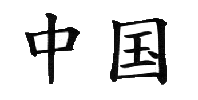China Beat Archive
Date of this Version
2-11-2010
Document Type
Article
Citation
February 11, 2010 in The China Beat http://www.thechinabeat.org/
Abstract
One of the most frequent questions that scholars and writers hear is “I’m interested learning more about your field. What should I read?” Answering this query is surprisingly tricky, as often the books that specialists love the most are far beyond the introductory level that many general readers are seeking. China Beatwould like to help; below is the inaugural post in our new series, “Where to Begin.” In these essays, we’ll be asking authors to suggest a broad range of books that might make up a good beginning reading list for someone setting out to explore an unfamiliar topic. Here, Paul Katz surveys the literature on religion and modernity in China and Taiwan, providing readers with a sense of recent developments in the field and offering many suggestions for further reading.
In recent years, a growing body of scholarship has begun to consider the importance of religion in modern Chinese history, including the ways in which religious movements adjusted to state policies as well as their role in shaping social and cultural development. The fact that so much previous scholarship in this field has tended to overlook religion seems to be symptomatic of a tendency to uncritically rely on Enlightenment models that posit the decline of religion as marking a harbinger of secular modernity. Such views have constricted our ability to fully describe the complexities of the past, especially when it comes to those non-Western nations that experienced strikingly different processes of modernization. As the books described below clearly show, however, religion was an integral force that shaped the formation of Chinese modernity.
Two edited volumes reflect exciting developments in the field. The first, Making Religion, Making the State: The Politics of Religion in Modern China (Stanford University Press, 2009), sheds new light on the interaction between religion and the state. The editors, Yoshiko Ashiwa and David L. Wank, both of whom are social scientists working in Japan, have put together an impressive set of papers based on a 2004 conference held at Stanford University. Topics covered include the range of responses to religious activities on the part of the late imperial state (Timothy Brook), modern Chinese Buddhism as seen in two case studies of the Nanputuoshan 南普陀山 monastery in Xiamen 廈門 (Ashiwa; Wank), Christian organizations and their ritual activities (Richard Madsen and Fan Lizhu 范麗珠; Carsten T. Vsala), Muslim ethnic identity and religious life (Dru Gladney), and the intricate interplay between communal religious traditions (a.k.a. “popular religion” or “local cults”) and the state (Kenneth Dean; Adam Chau; see also the recent books by Chau and Thomas DuBois). The book concludes with a paper by Utiraruto Otehode on qigong 氣功 (but see also the authoritative study by David Palmer).
Included in
Asian History Commons, Asian Studies Commons, Chinese Studies Commons, International Relations Commons


Comments
Copyright February 11, 2010 Paul Katz. Used by permission.